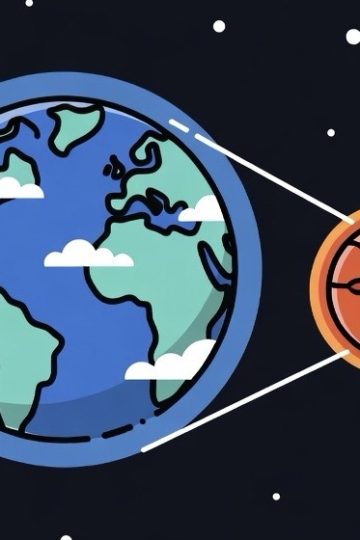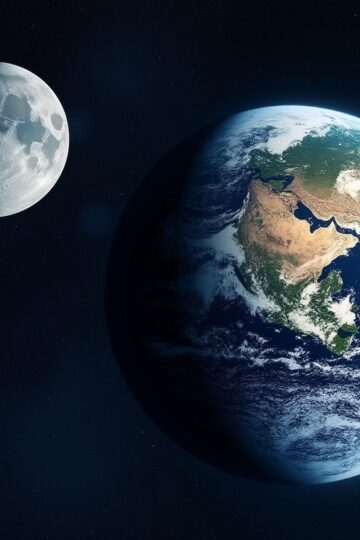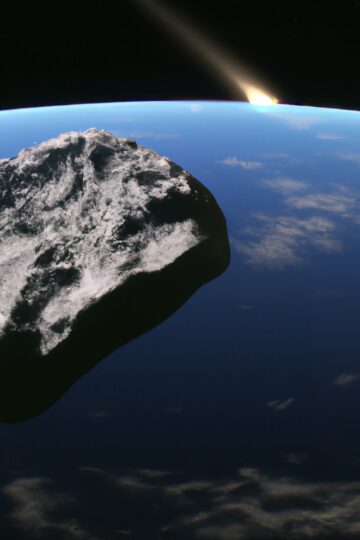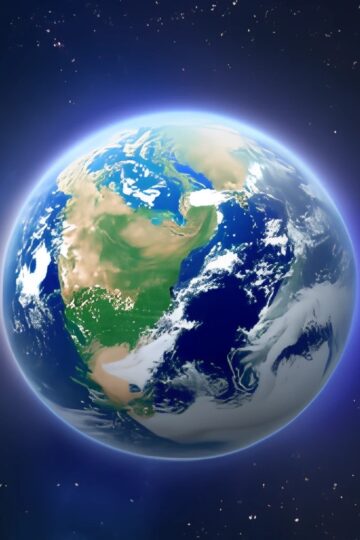Stephen Hawking warned that humanity may have only 100 years left on Earth unless we become a multi-planetary species. He highlighted rising risks like climate change, overpopulation, nuclear war, asteroid impacts, deadly pandemics, genetically engineered viruses, and uncontrolled super-AI that could lead to extinction. Originally giving us 1,000 years, he shortened the timeline in 2017 […]
Tag: earth
Lunar Recession: Moon Drifts 1.5 Inches Yearly from Earth
The Moon is drifting away from Earth at 1.5 inches (3.8 cm) per year, a process called lunar recession driven by tidal forces and angular momentum. Earth’s rotation pulls ocean tides ahead of the Moon, slowing our planet’s spin. This energy transfers to the Moon, pushing it into a wider orbit. Laser measurements from Apollo […]
LUNAR RECESSION: Earth and Moon’s Cosmic Ballet
The moon, Earth’s companion, is in a subtle celestial dance, gradually distancing itself at a rate of 1.5 inches per year—a phenomenon known as lunar recession. This gradual separation impacts Earth’s rotation, slowing it down and subtly lengthening our days. While the effects are minimal in the short term, this cosmic interplay serves as a […]
Origins of Life: The Search for the First Animal
This article explores the search for the first animal, or the common ancestor of all animals that lived over 600 million years ago. It covers the earliest evidence of life, the first animals, and the rise of multicellular organisms. The search for the first animal remains an exciting and challenging area of scientific research. The […]
The Polar Night: Where the Sun Never Rises on Earth
The polar night is a period of continuous darkness that occurs during the winter months at the Earth’s poles. It is caused by the tilt of the Earth’s axis and has significant effects on the environment, living organisms, and human health. Despite its challenges, the polar night also has scientific and cultural significance. Long Version […]
Why are Humans on Earth? | Q&A
The scientific consensus is that humans evolved on Earth over millions of years through a process of natural selection. Our earliest ancestors diverged from other primates around 6-7 million years ago, and over time, evolved into the modern human species we are today, Homo sapiens. As to the purpose or reason for our existence, that […]
When will an Asteroid Hit Earth? | Q&A
There is no way to predict exactly when an asteroid will hit Earth, as it largely depends on the trajectory and characteristics of any asteroids that might be on a collision course with our planet. However, scientists are constantly monitoring near-Earth asteroids and comets and studying their orbits to identify any potential impact risks. Fortunately, […]
Why is the Sky Blue?
The sky appears blue because sunlight is scattered in all directions by the Earth’s atmosphere, and shorter wavelengths of light (such as blue) are scattered more than longer wavelengths (such as red).








